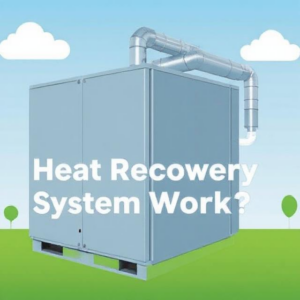A Heat Recovery System (HRS) is an energy-efficient ventilation solution that enhances indoor air quality by exchanging stale indoor air with fresh outdoor air while retaining heat. This process not only ensures a constant supply of clean air but also reduces energy consumption by recovering up to 90% of the heat from the outgoing air.

How Does a Heat Recovery System Work?
An HRS operates by extracting warm, stale air from indoor spaces and replacing it with fresh, filtered air from outside. The system utilizes a heat exchanger to transfer heat from the outgoing air to the incoming air without mixing the two air streams. This mechanism maintains indoor temperatures, reduces heating costs, and prevents moisture buildup, inhibiting mold growth.
Types of Heat Recovery Systems
- Centralized Heat Recovery Systems: These systems, including mechanical ventilation heat recovery, are designed for whole-house ventilation, providing fresh, filtered air throughout the building. While efficient, they require extensive ductwork, which can lead to higher installation and labor costs.
- Decentralized (Single-Room) Heat Recovery Systems: Ideal for retrofitting existing buildings, these units are installed through the wall in individual rooms. They continuously replace stale, moisture-laden air with fresh, filtered air from outside and are easy to install without the need for ductwork.
Benefits of Single-Room Heat Recovery Systems
- Energy Efficiency: Recover up to 90% of heat from outgoing air, reducing heating costs.
- Improved Air Quality: Provide a constant supply of fresh, filtered air, reducing indoor pollutants.
- Easy Installation: No ductwork is required, making them ideal for both retrofits and new builds.
- Moisture Control: Prevent condensation and mold growth by managing indoor humidity levels.
- Quiet Operation: Operate silently, eliminating the need for noisy extractor fans.
- Enhanced Security: Allow for ventilation without the need to open windows, reducing noise intrusion and security risks.
Incorporating a heat recovery system into your building can significantly improve energy efficiency and indoor air quality, contributing to a healthier and more comfortable living environment.



